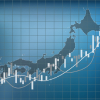Equity
Asian equity markets rose marginally in May, boosted by Shanghai’s plan to lift COVID-19 restrictions, even as the US Federal Reserve raised its benchmark overnight interest rate by 50 basis points. For the month, the MSCI AC Asia ex Japan Index rose by 0.5% in US dollar terms.
Asian markets were downcast in April as investors were concerned about inflation and the likelihood of a larger-than-expected rate hike by the US Federal Reserve. For the month, the MSCI AC Asia ex Japan Index fell by 5.2% in US dollar (USD) terms.
New Zealand Fixed Income Monthly – April 2022
It has still been a tough year so far for New Zealand bonds amid pressure from inflation. That said, the market in New Zealand has been an outperformer among global peers since the beginning of 2022.
New Zealand Equity Monthly – April 2022
Navigating Japan Equities: Monthly Insights from Tokyo (May 2022)
We discuss the implications of the weak yen, now considered by some as a menace rather than a blessing, for the Japanese market and economy. We also explain the potential impact of higher energy and commodity prices.
Ground-level observations from China
A trip back to China provided an opportunity to experience first-hand the impact innovative technology and digitalisation is having on a fast-changing urban society.
Global Equity Quarterly (Q1 2022)
We are keen to participate in the push towards a less carbon intensive future but want to do so in a balanced fashion, with one eye on the associated risks.
New Zealand Fixed Income Monthly – March 2022
The New Zealand bond market has experienced a rough start to 2022. The chief driving market factor has been the upward movement in reference interest rates, with the swap and government curves all moving up as central banks turn hawkish to fight inflation for the first time in a generation.
New Zealand Equity Monthly – March 2022
This month we focus on A-REITs, which are larger and more liquid relative to their New Zealand peers. One of the sector’s benefits over its New Zealand counterpart is its simple numerical advantage: Australia boasts 34 REITs, which is three times the number of REITs in New Zealand.
New Zealand Fixed Income Monthly – February 2022
We think the New Zealand bond market looks very attractive relative to the rest of the world given how high our interest rates are. At the same time, we certainty aren’t immune to developments in the rest of the world, particularly the US, where the Federal Reserve is poised to begin raising rates.













